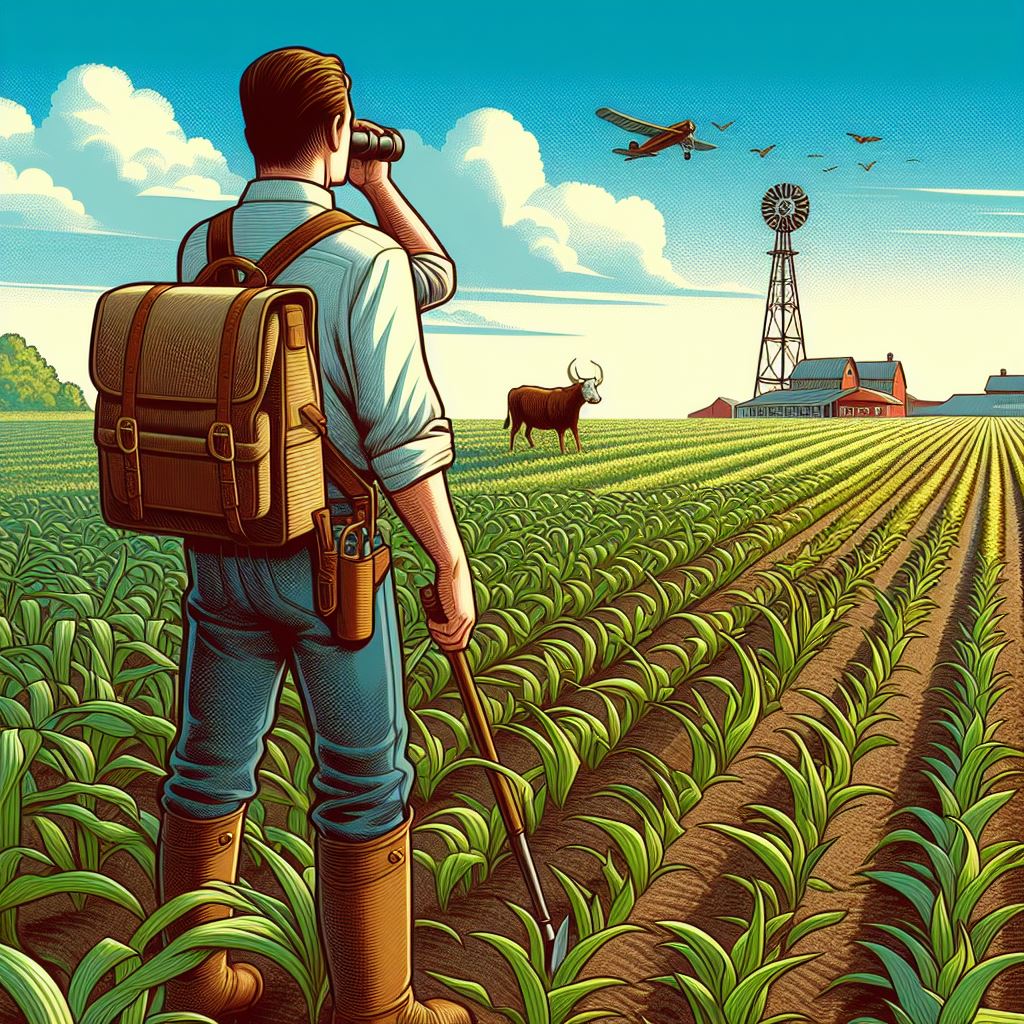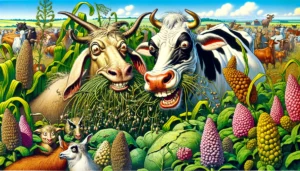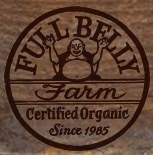
Crop Scouting 1.jpg
Crop Scouting
Definition:
Crop scouting, also known as field scouting or crop monitoring, is the systematic observation, assessment, and analysis of crop fields to identify pests, diseases, nutrient deficiencies, environmental stresses, and other factors that may affect crop health and yield potential.
Informative Tips:
Crop scouting is a proactive management practice that enables farmers to make timely and informed decisions regarding pest control strategies, nutrient management interventions, irrigation scheduling, and crop protection measures. By regularly scouting their fields throughout the growing season, farmers can detect potential problems early, implement appropriate management practices, and optimize crop performance and profitability.
Fall off the barn roof and busted your keister? Life on the farm or ranch can be tough on the bum. Need a break? Laugh it off at FarmerCowboy.com, the #1 farm humor site. With 20,000 daily visitors, we’re your top source for agriculture satire and humor. Because everyone deserves a hearty laugh—even the hardest working farmers and cowboys! Join us and turn those long days into fun tales at FarmerCowboy.com.
Valuable Assistance in Implementation:
1. Scouting Protocols: Establish standardized scouting protocols and sampling techniques to ensure consistent and thorough field assessments, covering key crop growth stages, pest lifecycles, and environmental conditions.
2. Pest Identification: Train scouts to accurately identify common pests, diseases, weeds, and beneficial organisms, using field guides, identification keys, digital apps, and diagnostic resources to distinguish between harmful and beneficial species.
3. Pest Thresholds: Establish economic thresholds for pest populations or damage levels based on crop-specific guidelines, research data, and pest management recommendations to determine the need for intervention and prioritize management actions.
4. Monitoring Tools: Utilize technology tools and equipment, such as handheld GPS devices, drones, remote sensors, and smartphone apps, to facilitate data collection, mapping, and analysis of field scouting observations in real-time.
5. Data Interpretation: Analyze scouting data and observations to assess pest pressure, disease incidence, weed infestation, nutrient status, soil moisture levels, and other factors influencing crop performance, using quantitative and qualitative methods to guide decision-making.
6. Integrated Pest Management (IPM): Implement an integrated pest management approach that combines cultural, biological, mechanical, and chemical control tactics to minimize pest impacts while minimizing risks to human health, beneficial organisms, and the environment.
7. Record Keeping: Maintain accurate records of scouting activities, including observation dates, locations, pest populations, management actions taken, and outcomes, to track trends over time, evaluate management effectiveness, and inform future decision-making.
Practical Advice for Farmers:
- Develop a crop scouting schedule and calendar based on crop phenology, pest life cycles, and historical pest pressure patterns to prioritize scouting efforts during critical growth stages and pest activity periods.
- Train and empower farm personnel, agronomists, or scouting teams to conduct systematic field scouting, providing them with proper training, equipment, and support to perform accurate and reliable assessments.
- Collaborate with agricultural extension specialists, crop consultants, and industry experts to access timely information, diagnostic services, and technical assistance for addressing specific crop scouting challenges and pest management issues.
In conclusion, crop scouting is an essential component of proactive crop management that enables farmers to monitor, diagnose, and manage crop health and performance effectively. By integrating crop scouting into their farm management practices, farmers can enhance productivity, profitability, and sustainability while minimizing risks and environmental impacts.
References:
- “Crop Scouting Manual.” University of Illinois Extension. Link
- Hodgson, E. W., & Bader, T. (2018). Crop scouting and field mapping with drones. University of Minnesota Extension. Link
- Pedersen, P., & O’Neal, M. E. (2019). Field crop scouting basics. Iowa State University Extension and Outreach. Link


Originally posted 2023-05-28 15:28:43.
Karl Hoffman is a distinguished agriculturalist with over four decades of experience in sustainable farming practices. He holds a Ph.D. in Agronomy from Cornell University and has made significant contributions as a professor at Iowa State University. Hoffman’s groundbreaking research on integrated pest management and soil health has revolutionized modern agriculture. As a respected farm journalist, his column “Field Notes with Karl Hoffman” and his blog “The Modern Farmer” provide insightful, practical advice to a global audience. Hoffman’s work with the USDA and the United Nations FAO has enhanced food security worldwide. His awards include the USDA’s Distinguished Service Award and the World Food Prize, reflecting his profound impact on agriculture and sustainability.




